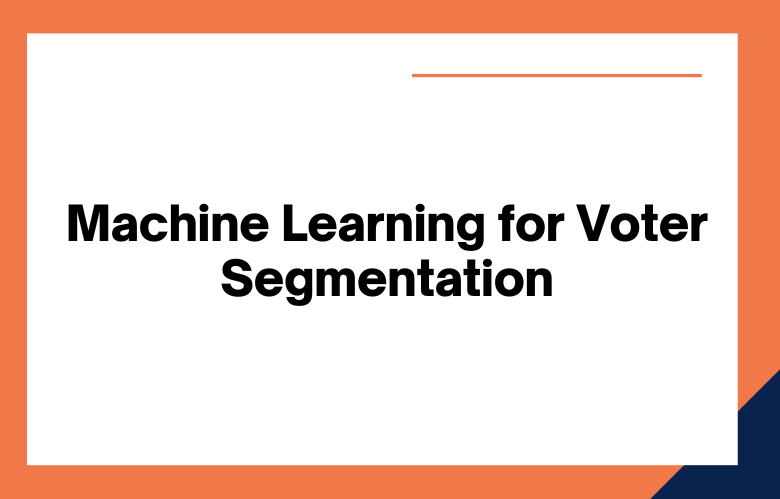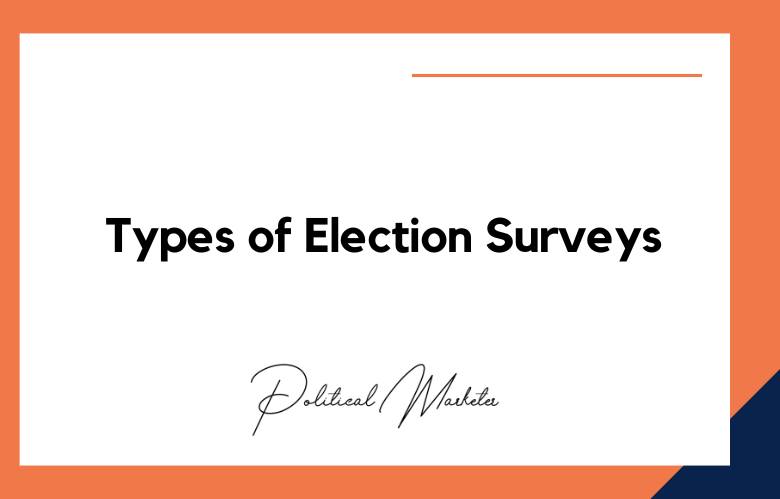In the era of big data, machine learning is becoming increasingly crucial for understanding and predicting voter behavior. By segmenting voters into different groups based on their characteristics and past voting behavior, campaigns can more effectively target their messages and get out the vote.
We’ll examine how machine learning for voter segmentation can help campaigns better understand and engage voters.
How Machine Learning Works
Machine Learning allows computers to obtain data without being explicitly programmed. In voter segmentation, machine learning algorithms are used to analyze patterns in voting data. The algorithms learn from this data and can then predict future behavior.
Some standard machine-learning algorithms for voter segmentation include logistic regression, decision trees, and random forests. Logistic regression is a method used to predict a binary outcome (such as whether or not someone will vote).
Decision trees are a type of algorithm that splits the data into groups based on certain conditions. Random forests are algorithms that create multiple decision trees and then combine the results.
Why use Machine Learning?
Machine learning has many advantages for voter segmentation. It is fast, efficient, accurate, and used to segment large datasets quickly and easily.
Machine learning models can be updated as new data becomes available, which means they can be used in real time during an election campaign. Finally, machine learning models can be deployed online and accessed by anyone with an internet connection.
What is Voter Segmentation?
Voter segmentation divides a population of voters into subgroups based on shared characteristics or interests. The goal of voter segmentation is to identify voters likely to respond positively to a particular message or campaign tactic.
There are many different ways to segment voters. Still, some standard methods include demographic information (age, gender, race), location (state, congressional district), and voting history ( turnout in past elections, party affiliation).
Other factors that can be used for voter segmentation include economic status, education level, and religious affiliation.
How Machine Learning can help
Machine learning is a tool used to analyze large data sets and identify patterns that are not easy to spot with the naked eye. Regarding voter segmentation, machine learning can identify hidden relationships between different variables and predict how voters will behave.
For example, let’s say you have a database of past election results and want to use machine learning to predict which candidate will most likely win in a future election.
You could feed this data into a machine learning algorithm, then output a prediction based on the patterns identified in the data. In addition to predicting future behavior, machine learning can generate new insights about past behavior.
For example, let’s say you want to know why more people voted for Candidate A than Candidate B in a particular election. You can use machine learning to analyze the data and identify factors that may have influenced people’s decision-making.
Machine learning has several benefits for voter segmentation. Machine learning algorithms can help campaigns save time and money by targeting only those voters who are receptive to their message. Machine learning can help campaigns craft more effective messages by identifying the factors most predictive of voting behavior.
There are things to keep in mind when using machine learning for voter segmentation:
- It’s essential to have access to high-quality data.
- Testing and evaluating different models before deploying them in a real-world setting is necessary.
- It’s essential to stay up-to-date on the latest advancements in machine learning to take advantage of new techniques as they become available.
How to use Machine Learning for Voter Segmentation
- Collect data on voters. This data can include demographic information (age, gender, race, etc.), social media data (Twitter handles, Facebook likes, etc.), and voting history data (whether or not they voted in the last election, which candidate they voted for, etc.).
- Use a clustering algorithm to group voters with similar characteristics. Clustering algorithms are a type of machine learning algorithm that can automatically group data points without prior knowledge of the existing groups.
- Analyze each cluster to determine which messages are most likely to resonate with voters in that group. Once you have identified the sets, you can start crafting targeted messages for each.
- Deliver the targeted messages to each cluster of voters. Numerous ways exist, but some popular methods include online ads, direct mailers, and robocalls.
- Obtain a list of registered voters in your district. This can be done through your local election office or online.
- Choose a machine learning algorithm that best suits your needs. There are many machine learning algorithms, so it is essential to research and choose the one that works best for your campaign. Suppose you have a large dataset. You may want to use a supervised learning algorithm.
- Train your model on historical data. This step is vital to ensure that your model is accurate. To train your model, you must provide data points such as vote history, demographics, and district information.
- Use your model to predict which voters will support your candidate. Once you have trained your model, you can use it to predict which voters will most likely help your candidate based on their demographics and voting history. This will allow you to focus your efforts on persuading voters most likely to convert.
The Benefits of Voter Segmentation
Machine learning has several benefits for voter segmentation. Perhaps most importantly, it can help us target our campaign messaging more effectively. By understanding which groups of voters are most likely to respond positively to specific messages, we can ensure our campaigns are as effective as possible.
In addition, voter segmentation can help us identify potential swing voters. These voters may not have a solid allegiance to either party and, as such, could be persuaded to elect either candidate.
As any politician will tell you, swing voters are highly coveted and hard to come by. But with machine learning, they’re within reach. Finally, voter segmentation can help us avoid wasting time and resources on groups of unlikely voters to support our candidate.
There’s no use trying to convince someone who’s already decided they will vote for the other candidate; it’s a waste of time and resources that could be better spent elsewhere. With voter segmentation, we can focus our efforts on those most likely to support us and make the most impactful use of our time and resources.
How to use Machine Learning for Voter Segmentation
Machine learning is used in several ways for voter segmentation. The approach you take will depend on your specific needs and goals.
One popular method is predictive modeling. This involves using historical data on voting patterns to train a machine-learning model, which can then predict how people will vote in future elections. This method can segment voters by the likelihood of voting for a particular candidate or party and their likelihood of voting.
Another standard method is cluster analysis. This approach entails grouping individuals with similar characteristics so they can be easily compared against each other.
Cluster analysis is often used to identify groups of swing voters or potential issues that could sway voters in one direction. No matter which method you choose, there are a few key things you’ll need to get started:
- Data on past elections
- Demographic information on potential voters
- Access to a machine learning platform like Google Cloud Platform or Amazon SageMaker
With these things in hand, you’ll be well on your way to better understanding the electorate and running more effective campaigns. There are many different ways to use machine learning for voter segmentation.
One way is to use demographic information to predict voting behavior. It is done by looking at age, gender, income, education, and location.
Another way to use machine learning for voter segmentation is to look at past voting behavior and use that information to predict how someone will vote.
This is done by looking at factors such as which party they usually vote for, whether they typically vote in primaries or not, and whether they usually vote in general elections.
Machine learning can also identify potential swing voters and target them with specific messages. This is by looking at factors such as what issues they care about, which candidate they would most likely support, and whether they have voted in previous elections.
Conclusion
Machine learning is a powerful tool that can be used for voter segmentation. By understanding how machine learning works and how it can be used to analyze data, campaigns can gain insights into the behavior of voters and make more informed decisions about how to target their messages.
Political campaigns are complex and expensive endeavors that hinge on getting the right voters to the polls. Machine learning can help identify and segment these key voters into manageable groups for more effective outreach.
Contact us today if you need help with your next political campaign. We’d happily discuss our voter segmentation services and how machine learning can benefit your efforts.










